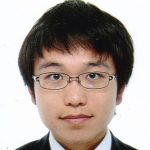Ryota Sasaki
Home University: Tohoku University
Field of Study: Electrical, Information and Physics Engineering
Status: B2 Expected Graduation: March 2020
Research Host Lab: Prof. Jane Grande-Allen, Department of Bioengineering
Research Project Title: “Building a Meso-scale Mechanical Testing Device for analysis of Rodent Heart Valve Tissue” (PDF)
Why Nakatani RIES?
My academic and professional goals are to study bioengineering and apply the knowledge and the skills from this field to the treatment and diagnosis of disease. By participating in this program, I will have a chance to study in the U.S., one of the most advanced countries in the field of bioengineering. I value the opportunity to learn advanced technology skills at Rice University which I cannot experience during my bachelor’s degree in Japan. I am convinced that it would be a valuable opportunity for me to consider my future career.I really look forward to studying the field which I am interested in with both American and Japanese researchers. Participating in this program is a shortcut to experience hands-on research and improve my academic and daily English comprehension skills. Furthermore, college life is a time for new and exciting experiences as well as a time to explore diverse and innovative ideas. Researching and discussing with people from different countries are important for me to expand the vision and the way of thinking. I believe that this six week-program will stimulate my mind.
- To study and acquire the knowledge about bioengineering.
- To learn how to play a role in the laboratory and experience the task as a researcher.
-
To improve my academic and daily English comprehension skills.
-
To learn about American culture as the world’s most ethnically and culturally diverse nation.
-
To make friendships with American and Japanese students.
Excerpts from Ryota’s Weekly Reports
- Week 01: Arrival in the U.S.
- Week 02: First Week in My Research Lab at Rice
- Week 03: Interview with a U.S. Researcher
- Week 04: Reflections on English Language & Life in the U.S.
- Week 05: Research in the U.S. vs. Research in Japan
- Week 06: Final Week at Rice & Research Poster Presentation
- Week 07: Visit to Washington, DC & New York City
- Final Report & Tips for Future Participants
Week 01: Arrival in the U.S.
I arrived in Tokyo with both concerns and hopes about my first experience doing research in the U.S. on my mind. The lecture on “Transferable skills Development for Ph.D. Careers” was a good opportunity for me to reconfirm my goals for this program and learn an array of transferable skills for my post-graduate career. Most of the engineering students at my university get a job after their master’s degree and few students apply for a Ph.D. Considering the employment situation in Japan, I thought it was common and I was supposed to do this as well. However, this lecture changed my mind and gave me a new perspective regarding the Ph.D. Those who get a Ph.D. have many ways to play an active part in academic and industrial scientific field. I learned that the skills which the companies require are not only related to my field, but also communication, leadership, and management.
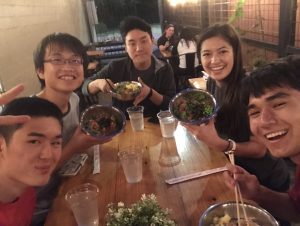
Unified design with scientific symbols, an awesome library similar to ones appearing in foreign films, and great places for relaxation, etc. All of the buildings created an atmosphere at Rice University which blew my mind. I thought the campus at Rice University was really good for studying and doing research, so I was once again reminded of how lucky I am to have a chance to be here for 4 weeks. Despite being such a nice place, Houston is very hot and humid according to what I have heard from Yakob, one of the NAKATANI RIES U.S. Fellows. Because of that, the AC was put on low everywhere in Houston. Actually, I already heard people in Houston put the AC on low degree in the pre-departure orientation back in Kyoto, but after experiencing it firsthand, the temperature gap between inside and outside is more drastic than I expected. In addition, the atmosphere in Houston is a little different from the one which I experienced in California last year. There are many Asian people in California, but in Houston, there are much fewer Asian people and more people of Hispanic descent or who speak Spanish. I knew there are some differences across the States, but the differences between each city/region was bigger than I assumed. I cannot find such a cultural difference in Japan because of its homogeneity. In comparison to my last experience in California, I felt the multicultural atmosphere here more.
The orientation program at Rice University in the first week made me feel like I am a freshman at this university. After I took Professor Kono’s lecture about life as a researcher in the U.S. in the pre-departure orientation, I have been interested in the education system and Ph.D. programs in the U.S. Therefore, his lecture about graduate study and future career was really meaningful for me. I did not know the Ph.D. program in the U.S. well. I was surprised to see the difference of graduate school: the length of research, the relationship between professors and students, and motivation as an expert in each respective field. I would like to come to a deep understanding as to how this enthusiastic atmosphere for research came to be through this experience. Currently, I am not sure if I will apply for Ph.D. programs either in Japan or in the U.S. However, his lecture has motivated me to take it upon myself to get a Ph.D. in the U.S.
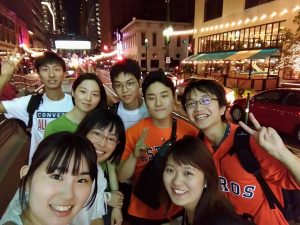
One of the dreams of my life came true during the first weekend in Houston. I went to the Minute Maid Park with some Japanese Fellows to watch a Major league baseball game – the Houston Astros vs Oakland Athletics! I have never watched any baseball live game even in Japan, so I was really excited to be there among the lively atmosphere and enthusiastic fans. In Japanese professional baseball games, both supporters cheer for each team in rotation. However, in this game, most of the audience were Astros’s supporters, so booing was common. People around me kept changing their mood depending on the situations. For example, a fine play made people so excited, but the dubious judge made people angry. People in the U.S. are really enthusiastic about sports. It had become one of my awesome memory here in Houston.
Preparing for Research in the U.S.
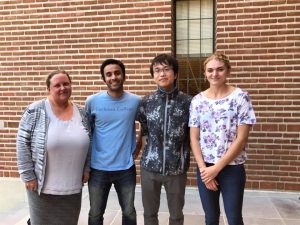
In short, my focus is reading comprehension. The subjects are papers and articles related to the research. After I was assigned my host laboratory and my mentor, I contacted them and received the papers. They were difficult to understand not only because of my insufficient vocabulary but also because of the technical terms and knowledge required for the research. Additionally, I just became a sophomore last April so I aimed to just get a rough understanding of the topic, increase my English vocabulary for research, and study basic knowledge about biology and the mechanics of materials that I have not learned about but is necessary to facilitate a good understanding of the papers.
In addition, I am taking a class which gives me an opportunity to do research at my university. My teaching assistant in this class told me how to look up papers. It was also helpful for me to find related articles when I could not understand papers by themselves.
I think those who receive research internship want to go to graduate school or are interested in research. The research internship gives them a good opportunity to gain research experience before becoming a senior or going to graduate school since it lets them build a relationship with the experts and mentors. Thus, I recommend Japanese students who are going to do a research internship in the U.S. to:
- Make frequent contact with your host professor and mentor after choosing your host laboratory,
- Read papers and articles related to the research and try to get a rough understanding of the topic rather than wracking your brain to completely grasp everything,
- Ask your host professor, mentor, or professors who research related field at your university questions,
- Prepare yourself with the basic knowledge for research if you are a sophomore to make up for the lack of technical knowledge.
Question of the Week
I participated in the final presentation of U.S. Fellows in Tokyo. Then, I thought all of them were really good at doing the presentation and their slides were great. How often do students in the U.S. have a chance to do a presentation and making slides in their classes? What is the difference of class style between the U.S. and Japan?
- Excellent question, in the U.S. doing group projects or giving classroom presentations starts very young; sometimes as early as middle school. Therefore, American students have a lot of practice at making presentations in front of a class/audience for almost their entire educational career. However, giving technical or research presentations is usually something that American students don’t start doing until they are in college. So, most universities in the U.S. have a lot of specialized programs that help provide support/training for students on how to give good presentations or improve their writing skills.
- At Rice, some of these include:
- Program in Writing & Communication
- Center for Written, Oral, and Visual Communication
- Rice Center for Engineering Leadership: Communication Support
- Dr. Moran also has developed a number of online courses through Coursera including “Writing Skills for Engineering Leaders”, “Oral Communication for Engineering Leaders”, and “Interpersonal Communication for Engineering Leaders”.
- You may also want to review the wide array of resources posted on our Poster and Presentation Development Resources page.
Week 02: First Week in My Research Lab at Rice
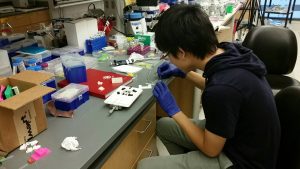
I was little nervous when I visited my host laboratory at the BioScience Research Collaboration (BRC). However, Jane Grande-Allen, my host professor, welcomed me warmly with her precious children and I was able to calm down. On the first day, she and my mentor, Shail, told me about the project that I will do this time. After that, my mentor guided me through the laboratory, student office, and other rooms. The atmosphere and layout of the laboratory at the BRC are different from the laboratory at Tohoku University. At BRC, there is a big laboratory with many kinds of equipment and people in the same lab share the same office space. Thus, it is easy to communicate with each other and talk about their progress. I like the atmosphere and it is good for each researcher to keep and/or improve their motivation. In addition, the doors at professors’ offices are always open when they stay there so it seems easy for students to talk about their research with professors. I like the close relationship between students and professors.
My mentor is an outgoing and bright person. He has a background in Applied Physics and has experienced study in different countries and states in the US, and is working towards a Ph.D. Now he is trying to influence the mechanical properties of these hydrogels to make them behave more like biological tissue. Evaluating the strength/doing analysis of tensile properties is how he measures this behavior so this is my projects during this research internship program. He is really kind to me but I reached a plateau due to the lack of my English skills for technical terms. Daily conversations do not bother me because I usually deal with international students at my university. However, this is the first time for me to discuss research view and get some information for the project. I was confused about differences of accents between katakana and English. We use the name especially for some chemical materials in Japanese but the accent is different so when my mentor explained to me the procedure or I wanted to say the name of the material, I could not understand the word on time or he could not comprehend the word. In addition, there are many technical terms that I did not know. To overcome this problem, I took a note of words with the accent. At the end of the first week, I got used to using technical terms and was able to discuss ideas with my mentor. I would like to keep making effort to improve English ability.
One of the biggest events in this program is a poster presentation on September 20th. The lecture by Dr. Gayle Moran was helpful for me to learn how to make a poster because I have never experienced making a research poster. I received knowledge of basic skills for making good posters such as structure, title and coloration. I have an additional lecture for learning the way to do poster presentation and coaching session on September 18th. I look forward to attending this lecture and gaining knowledge for doing presentation well.
How do I learn and remember new words? Building up vocabulary is hard but necessary and important when I try to improve my English ability. The lecture by Kyung-Hae Bae was also helpful for me to gain an understanding of the way to study vocabulary. During my stay in Houston, I am in an environment where I can practice my English often Utilizing this chance and method that I learned in this class, I would like to make my knowledge practical.

Outside of research, I had many great events: watching the eclipse, having lunch with Dean Seiichi Matsuda the Dean of Graduate Studies, having dinner with U.S. Fellows, and visiting the Houston Museum of Natural Science. At the end of this week, I faced the biggest accident Hurricane Harvey. I never imagined that I might encounter such a big hurricane during my stay in Houston. I was surprised at the loud thunder, lightning, blast, and flooding. Most of stores and campus at Rice University are closed, and people including us had to stay inside a hotel. To get information about hurricanes, I went on the Internet and acquire a knowledge of it. The most interesting thing is how to decide the name of hurricanes. Hurricane names are given by National Hurricane Center. There is a list of the names and the names on each year’s list alternate between male and female. In Japan, we call Typhoon No.5, for example, so I felt giving a name to hurricane is interesting. Unfortunately, I lost some chance to work at laboratory because of Harvey but I hope the weather will improve, and look forward to working at my host laboratory for last 3 weeks.
Research Project Update
I have two research projects. One is the mechanical testing project called “Building a Meso-scale Mechanical Testing Device for analysis of Rodent Heart Valve Tissue”, and the other is hydrogel project called “Engineering hydrogels mechanically faithful to biological tissue”. I made hydrogels, and used them as test samples for the mechanical testing device.
As for the mechanical testing project, I try to use hydrogels that I made as test samples for the mechanical testing device. The system is composed of the stretching of a stripe of valve tissue affixed at the end to pillars made from polydimethylsiloxane (PDMS) with calibrated bar. In this week, I tried to make some of the parts of the device using a 3D printer. To print these parts, I measure the dimension of the stage of the microscope and design them using SolidWorks, a computer aided design (CAD). Next week, I will try to carry out a strain-stress test and analyze the properties.
As for the hydrogel project, the main goal for this time here is to learn more about how I can make PEG hydrogels to be similar to biological tissue. In this week, I synthesized them by crosslinking a pre-polymer solution using white light for utilizing the mechanical testing device
Doing research, I need to gain knowledge not only in my field but another field, and comprehension for using some devices I used CAD and 3D printer in a project at my university but my experience is not enough for utilizing some devices and doing research. Thus, in addition to General Lab Safety Training and Biosafety and Blood Borne Pathogens last week, I got briefed on using laser devices and synthesizing procedure. They were helpful lectures for me to understand the danger of experiments and the way to use the equipment.
Question of the Week
I took some lectures about a Ph.D. program in the U.S. and I knew many international students try to get Ph.D. in the U.S. Are there any U.S. students who try to get Ph.D. outside of the U.S. after their bachelor degree.
- Yes, this is often something that U.S. students think about – particularly U.S. undergraduates who have had the opportunity to study abroad such as the 2017 Nakatani RIES U.S. Fellows.
- However, there are often financial concerns for U.S. students when they pursue a PhD outside of the U.S. as, for example, Ph.D. students in Japan typically do not receive funding for their course fees or a stipend for doing research. So, economically it can be more advantageous to stay in the U.S.
- Also, most American students cannot take PhD coursework in a different language, they only know English. So that can limit which countries/programs they can apply to abroad.
- The #1 concern about choosing your PhD program should be which school has the best program and research advisor for the topic/area you are interested in. That may be in the U.S., that may be in Germany, that may be in Japan. But typically, U.S. students will get their PhD at a university in the U.S. and then maybe will apply to do a post-doctoral researcher position abroad.
- For more on the wide range of international programs open to undergraduate and graduate students in the U.S. see our ‘Other Related Programs Page’ for U.S. students.
Week 03: Interview with a U.S. Researcher
I interviewed my host professor, K Jane Grande-Allen, and my mentor, Shail Mehta. They gave me really helpful information and it was meaningful time.
Interview with Prof. Jane Grande-Allen
She is a professor in the Department of Bioengineering at Rice University. She decided to study in the field of biomedical engineering because she was always interested in medicine, but also loved math. For a long time, she thought she wanted to go to medical school, but one of her math professors intervened and told her that she was too good at math to give it all up and waste that talent on medical school. That changed her life. She told me that she was not sure at first what she wanted to do other than being a medical doctor, but then she learned about biomedical engineering and decided to pursue that field. I made a similar decision as her when I took an entrance examination to enter the university. At first, I wanted to go to medical school because I was interested in medicine as well. However, I am also interested in engineering because my father is an engineer. During my high school days, a lecture about biomedical engineering changed my life. I found what I want to do is that and decided to go to the engineering department at Tohoku University. I felt sympathy with her background.
The most interesting thing she talked about is the environment in her laboratory and department. She works in the Department of Bioengineering, where they have about 150 undergraduate students and 120 graduate students. They have 20 faculty members who teach these students and almost all of them are also running research labs. In her lab, they do a lot of research on mechanobiology and biomaterials research. This is an experimentally-based “wet lab”. She has 8 graduate students and 3 postdoctoral fellows at the present time, and she usually has 10 undergraduate students doing research in her lab.
She has 5 women and 6 men in her lab, which is pretty common for her history of graduate students. I was surprised at the number of undergraduate students and female researchers. At my university, about 4 undergraduate students are usually in each laboratory so the number of the undergraduate students in her laboratory is twice as much as at my university. In addition, it is a good environment where the ratio between women and men are almost half and half. Recently, the number of female researchers in Japan has been increasing but is still lower than men.
What Jane wants students to do is meaningful for me, too. Because she wants her students to learn about education in different parts of the world, she encourages them to pursue research internships in foreign countries. This can be over the summer, or during the academic year once they are finished with their classes. She believes that it is very important for young American students to learn about the customs and educational practices outside the U.S. because they will more than likely work for a multinational company in the future. In Japan, many institutions including Tohoku University encourage people to work or study globally. It has been on my mind that how people in other countries think about globalization. Her talk is one of the answers to my question so I would like to acquire the skills and make an experience of working globally.
Questions from Jane
- How did you decide to pursue your engineering studies?
- At first, I wanted to go to medical school because I was interested in medicine. However, I am also interested in engineering because my father is an engineer. During my high school days, a lecture about biomedical engineering changed my life. I found what I want to do is that and decided to go to the engineering department at Tohoku University.
- How could we get more Japanese students interested in our graduate program in bioengineering at Rice?
- One way to get Japanese students interested in the graduate program in bioengineering at Rice is to let them know the program and educational system in the U.S. We Japanese students usually go to the same school that we attended as undergraduate when we go to graduate school and do not have much information about the graduate program in the U.S., including Rice. I also did not know what a Ph.D. was very well before participating in this Nakatani RIES program. Through this research internship program, I am now really interested in to possibly applying for the graduate program in the U.S. Thus, I think making an opportunity of research experience for Japanese undergraduate students is a good way to attract them applying to the graduate program in the U.S.
Interview With Shail Mehta (Mentor)
He is working towards a Ph.D. and it is his 3rd year. He took bachelor degree at Carleton College and he has Applied Physics background.
Back in his undergraduate study, his main research filed was astronomy. He really identified himself as a physicist because he was interested in and good at the applied physics field, which is unique and works for applied problems using physics background. However, he is working in the bioengineering field now. Why is that? Actually, he is working on bioengineering topics but the solution to the problems that he works on require some physics knowledge. What really got him interested in going into the bioengineering field is that it is more applied and he will have many chances to come up and invent something for helping people. In addition, it is his impression, that this field gives him good skills for going to both industry and academia. Basically, he is in this department as a physicist so, at the end of this Ph.D. program, he will get Ph.D. in not bioengineering but physics because his goal is still using physics knowledge and applied the knowledge to bioengineering problems. Through this talk, I felt that he is proud of his job as a physicist. My goal is to apply knowledge of electrical engineering for biomedical engineering field. I would like to keep a pride in my mind and be a researcher like him.
Since he started his research in bioengineering field, he needed to learn the knowledge about biology and chemistry. He mainly acquired new knowledge from reading papers on his own and figured out the words that he did not know and asked other members in a laboratory. Another avenue is taking classes. His Professor, Jane, teaches a class about cell introduction and he takes her class. The other avenue is talking with people with different background. His background is very different from other members of the laboratory. For example, if he wants to learn chemistry problem, what he did is talking with people with a chemistry background. I think the environment that helping each other from diverse background is really good and it could be one of the important things to succeed in doing research.
He also told me how he prepared for entering Rice and advised me about the method to prepare for applying to the Ph.D. program. In his book, one of the best ways that he told me was to participate in a research internship program like Nakatani RIES and learn how research has been done in an institution which I am interested in. This is because the things that I learn through doing research is very different from taking classes. It could be easy to be good at taking classes. If I am academically very good, I am not necessarily a good researcher and working well in the laboratory is not easy. Thus, making an experience that doing research is a good way to prepare for the Ph.D. Another thing to prepare is to identify what I want to do in the Ph.D. and where I want to go. He also said looking at institutions and also professors that I am interested in is necessary for preparing for graduate school because the important point is not institution but professor who I work with. For example, if a school is not highly ranked, some professors are doing really interesting research there. On the other hand, if a school is highly ranked, all professors do not necessarily get a good result. Therefore, the good way is looking at different universities as well as professors and what do they do. He suggested for me to create a list of all schools that I am interested in and to compare the location, research topic etc. Sometimes schools shine with an individual program so it is important to think of not only school but also field. I am planning to go to graduate school so I would like to choose a school and professors referring to his advice.
Questions from Shail
- What is the most surprising thing in the U.S.?
- It is the temperature gap between inside and outside. It is hot and humid outside in Houston. On the other hand, inside is really cold. I heard it before but after experiencing it firsthand, the temperature gap was more drastic than I expected.
- What is your motivation to join this program in the U.S.?
- I think it is the meaningful experience for me to do research in the U.S. during the undergraduate. I have never known the graduate program in the U.S. and what the doing research is. Through this internship program, I would like to experience hands-on research and prepare for the graduate program. In addition, improving my academic daily English comprehension skills is another motivation to join this program.
Volunteer Experience in the U.S.
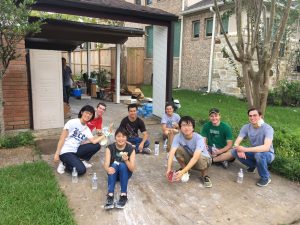
During the term when Rice University was closed, I joined a volunteer activity, Rice Harvey Action Team (R-HAT). R-HAT is coordinating and supporting volunteers who what to help on campus or in the Houston community, both immediately and for near-term and they are a collaborative partnership among the Student Association, the Doerr Institute for New Leaders, the Center for Civic Leadership, and the Graduate Student Association. I went to an area which was flooded and damaged. What I did was cleaning the debris up in the house. I was surprised because there was nothing and it only remained the wooden frame on the 1st floor. It represented the violence of the hurricane. It was a good experience to join a volunteer activity with people in the U.S.
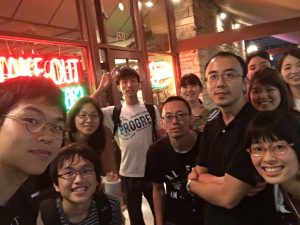
Research Project Update
Because of the awful hurricane, I did not have much time to do research this week. I restarted research about the mechanical testing device from September 5th. On that day, I joined the lab-meeting for the first time. It has been about a week since I started research but I was little nervous. Because it was the first day after Rice University reopened, we talked about each situation and our experience of the hurricane. Unfortunately, some of the members in the laboratory sustained damage from the flood. I did not know there was such big damage because the area around my hotel was safe.
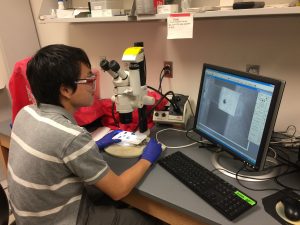
As for the mechanical tester project, building a Meso-scale Mechanical Testing Device for analysis of Rodent Heart Valve Tissue is the final goal. To evaluate the device and to consider the method of analysis, during this week, my goal was to analyze the strain-stress relationship of poly (ethylene glycol) (PEG) hydrogels using the device. I attached the PEG hydrogel to the device and measured how the pillar of polydimethylsiloxane (PDMS) bends and how PEG hydrogel stretches using the microscope. It was difficult to attach the hydrogel sample to the device because hydrogel is so delicate and easy to tear if it is dry. Although the procedure was simple, I tried it again and again. I finally completed all of the tasks because I found the tip for this procedure through the 7-tries. It is interesting to think out a method to work well through the failure. I think it is one of the attracting points of doing research. After that, I analyzed the result utilizing the mathematical formula of the mechanics of materials. It is not my field but learning different one through doing research is interesting. I also tried to make PEG hydrogels for the testing sample. I have never synthesized chemicals in the laboratory so I paid attention for dealing with each chemical. Although I failed making the hydrogel because I could not add a chemical completely at first, I succeeded in making it in the 2nd try!
Question of Week
Through the interview with my host professor and mentor, I knew Rice University more focuses on research and his college, Carleton College more focuses on education. In addition, there are many types of university and colleges in the U.S. such as liberal arts college, public universities, community college, etc. What is the difference of these university/colleges? I would like to know the system and how students choose their school.
- Great question. You can find lots of information on this from our Education in the U.S. Resources page.
Week 04: Reflections on English Language & Life in the U.S.
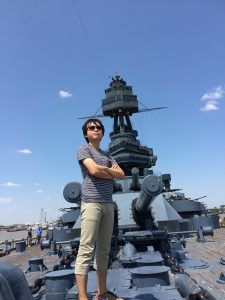
Since I arrived in Houston, 4 weeks have already passed. One of my goals for this program was to improve my English comprehension skills and throughout these four weeks, I improved my English skills, especially listening comprehension skill.
In the laboratory, I got used to using the technical terms and understand the meaning of them. As I mentioned in the 1st weekly report, it was difficult for me to use and understand the technical terms when I discussed ideas with my mentor. However, after discussing ideas and reading papers, again and again, I got accustomed to using them and understanding the meaning.
Because of the lack of my English ability, I still have two difficulties where I would like to improve my English comprehension skills. The first one is joining classes. I had a chance to join Jane’s class about Extracellular Matrix and it was my first time to join a class in the U.S. As the initial impression about the class, it seemed to be going fast. The slides were quickly changed, she talked about the topic speedily and she suddenly asked questions to students. I tried to catch up with the class, however, I almost could not take notes. I now koew I need to improve my English comprehension skills and get used to the lecture style. At the end of the class, although the lecture was only 50 minutes long, I more exhausted than after I take a 90-minute-lecture in Japan. Additionally, the classes in the U.S. are so interactive that no one falls asleep in the class but everyone listens to the talk and takes notes earnestly. In comparison to this, Japanese classes are almost passive and I sometimes see those who are using not a pen but smartphone. It is difficult to concentrate on the talk for 90 minutes but we Japanese students need to study harder.
The second one is group discussion. When I discuss about my research topic, I need to talk with my mentor and another member. During the meeting, I spoke to and listen to a talk with over 10 people in the laboratory. In Japanese, we usually start to say something after someone finished speaking. On the other hand, in English, people usually begin talking although someone is still talking. It was hard to find the right time to speak. In the laboratory meeting that I joined last Tuesday, if I wanted to say something, I could not say it because I missed the time to speak.
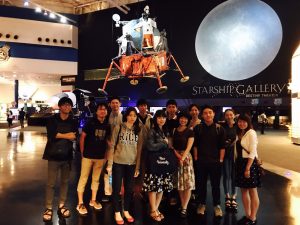
Using English in my daily life is also good chance to practice my English. There are lots of people from diverse countries in Houston so I hear many kinds of English accent such as Indian, Chinese, Indonesian, Spanish English. Sometimes it is difficult for me to catch the meaning and there is a time lag to understand what they said because the accent is different from the accent that I know. However, through this 4-week stay, I am getting used to listening to their accent. In the academic field, there are also many people from diverse countries so I think it is important to catch the meaning regardless of accent. Another point that was new for me in daily life was a short conversation or ‘small talk’. In the elevator, in the bus or Uber, and on the corridor, wherever I am, it is common to do short conversation with both acquaintance and stranger. I also learned about “elevator pitch” in the lectures by Sarah and Jenn Top, a program director of Global Engagement at Lehigh University. During the first couple of weeks, it was difficult to do so because I have never had such a short conversation with strangers in Japan. I was surprised and little scared when people spoke to me. After these lectures and experiences in daily life, I am getting used to doing the conversation. Through the small talk, I can find new information and practice my English.
I think the shortcut to improve a language skill is using the language with people who speak the language because the language is just a tool for communication. In my middle and high school days, I focused on studying English for passing the university entrance examination. The center of my English skill was not for communication but solving questions. Therefore, I struggled to talk with international students at the beginning of my university days. To overcome this, I made opportunities to talk in English with international students at Tohoku University and joined a short-term study abroad program during the long vacation. Learning the English phrases and building up the vocabulary is very important but if I learned lots of English grammar, phrases, and vocabulary, it would be just a knowledge on the desk. These experiences were helpful for me to improve my English. After I return to Japan, I would like to keep making opportunities to talk in English.
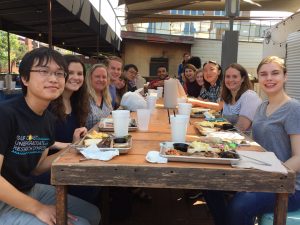
Thank you, Shail! One great event, Texas BBQ Party, in the laboratory was held. My mentor arranged the party for me with whole laboratory members. It was a good time for me to interact with each other, reflect my experience in Houston and know their carriers. I really enjoyed talking with them and had the best lunch during my stay!
Research Project Update
As I mentioned in my last report, my goal was to analyze the strain-stress relationship of poly (ethylene glycol) (PEG) hydrogels using the mesoscale mechanical testing device. Basically, I continued to do the same task in this week. The hydrogels that I made last week was 3.4 kDa and it is relatively not stretchy. This time, I additionally made the hydrogels with 20 kDa that is stretchier than I made last week. It is expected that these PEG hydrogels show different properties. As the next step, I will try to analyze the difference of properties and figure out the stress-strain relationship. In addition, I will collect the data from The Electroforce 3200 Series Ⅱ, a big mechanical testing device, and analyze them as well. Analyzing the difference will lead to evaluate how the hand-made testing device works.
I faced a difficulty at the point that I attach the hydrogel to the testing device. The big mechanical testing device at BRC has a function to pinch a sample from the top and bottom by two clips. To bring the hand-made device closer to this mechanical one, I had to consider how to clip a hydrogel. Because the device, especially the part where I attach the sample, is very small, it was difficult to find out the solution. I came up with some ideas; clipping a hydrogel with fold paper, clipping a hydrogel with a tape and sticking the edges. I would like to try these ideas next week and get more accurate result.
I started working on my research poster this week too. The hard thing that I felt was to summarize the research contents with a few words. Because I am doing two projects: Building a Meso-scale Mechanical Testing Device for analysis of Rodent Heart Valve Tissue, and Engineering hydrogels mechanically faithful to biological tissue, choosing the significant information and summarize them are important. Taking a lecture and reading the tips on the Internet, I learned what good design is, how to make the title, and how to integrate the results of research. It is good chance to practice making a poster in English so I keep trying to make it better.
Question of Week
I have a question about getting a job in the U.S. I think the style is much different from Japanese one. What is the job hunting in the U.S. like? How do students choose a company? When do students start looking for jobs?
- For more on this, see the section on Job Hunting in the U.S. on our Education in the U.S. resources page. You may want to look through some of the resources under ‘Career Resources’ on our Other Related Opportunities for U.S. Students page.
- Essentially, U.S. students can apply for internships, or short-term jobs during their summer break or even part-time jobs during the academic year. Students will often do different internships (professor or research) each summer at different companies or universities to gain broad experience. Then, in their senior year or the year that they will graduate from their Master’s or PhD programs they start applying for full-time jobs. They find these jobs through their university career office, such as the Rice Center for Career Development, and can go to these offices to get help preparing their resume, cover letter, application, or for workshops on presentation skills. Universities also often host career fairs where students can go and visit with many companies who would like to hire students.
- At Rice, there will be a Career and Internship Expo on Sept. 19th. It will be held from 10:00 AM to 3:00 PM in the Tudor Fieldhouse. You might want to try to visit/attend so you can see what it is like. But be sure you dress up as most all students there will be wearing a suit or business attire and if you visit with a company you may be asked to give them a copy of your resume. If you are asked for this, just explain that you are visiting international student from Japan and aren’t ready to apply for jobs yet but were just curious about what a U.S. style career fair was like.
- However, it is important to know that in the U.S. you do not have to attend a ‘good’ or ‘top’ school to get a job with a company. It your individual experiences that are shown on your resume that will help companies decide whether to interview for a job or not. This is why professional internships or research internships are so important for U.S. students; they show you not only have the ability to get good grades but also have the ability to do good work/research.
- Companies don’t hire by universities and there is no single job-hunting season. You can apply for a job or internship at any time and students must take initiative to visit their university career services office to gain help with how to find and apply for jobs that are good fits for their academic background and professional interests. The university will not find the job for you, but can give you a lot of resources to help you be well-prepared and connect you with possible companies, jobs, or fields that might be interesting for you to apply to.
Week 05: Research in the U.S. vs. Research in Japan
Back during the orientation term, both in Tokyo and at Rice, I was very excited to do research in the U.S. Professor Kono said it is more important to understand the research and the field deeply than to expect any results. Although he mentioned it is hard to get any results in this short term, I thought I would be able to get some outcomes from my experiments because I worked the whole day for four weeks and I have never done any research project. Also, I had been keeping in my mind that he told us paying attention was important: what the diversity in the laboratory is, female researchers and differences between Japan and the U.S. during this program.
Doing research is not what I assumed. It always took longer time to complete an experiment than I expected and I often could not get the results that I wanted to obtain. In the first week, I realized research requires a lot of patience to get ideal results and impressive insights based on knowledge from diverse fields to analyze the data. Outside of the experiments, I was touched by the ambiance of the laboratory in the U.S.; through talking with my lab mates and seeing their behavior. In my host laboratory, there are many female researchers including the professor and some of them are married. On the 1st floor of the BRC, there is a big space for children to play while their parents do research. I think it is this good atmosphere that encourages female researchers to concentrate on their research and it is a good description of the values of my laboratory. I also thought people in the U.S. work hard and play hard. In the laboratory, they work on their tasks very hard and sometimes discuss their progress or problems. On the other hand, during the lunch break or after their work, they sometimes talk about their research but enjoy talking their private hobbies and events more.
There are not any specific roles in my laboratory, so people come to and leave the laboratory whenever they want. Because each of them has different backgrounds and they run various projects, they keep tabs on the things going through discussion at the student office and lab-meeting once a week. It seems they enjoy talking about their own project and learning from others.
One thing that I deeply believe what is valued in terms of academic research in the U.S. is the interaction between professor and students, and students and students. We, Japanese people, have a culture to respect elder people and we usually talk with polite expression to them. It is hard to talk to professors or seniors at ease like taking with friends. On the other hand, in the U.S. the atmosphere is more casual than Japan. All students enjoy talking not only about their progress or difficulties but also their private life events; both with professors and another students and friends. I like this atmosphere, and it is good to make a comfortable laboratory environment.
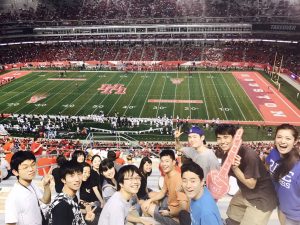
I am convinced that this research experience affected my attitudes towards my career goals. As I mentioned in my prior weekly report, most of the students get a job in Japan after their masters’ degree at faculty of engineering at my university. I think it is tedious to keep staying in one country and working there until the end of my career and it is necessary for me to leave my “comfort zone.” Through these four weeks, I have been inclining to engage in the academic field more than before I came to the U.S. I am also more interested in the bioengineering filed and I know I need to study my field and other ones that I am curious about more. I would now like to come back to the U.S. as an exchange student and a Ph.D. student. To be honest, I am still concerned about whether my whether my career will be in academia or industry, but I had a great time at Rice to consider my future career.
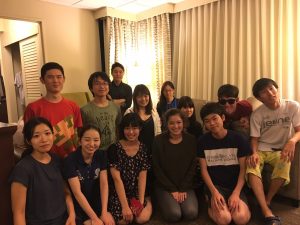
As for the optional events, the Rice Engineering Alumni (REA) hosted a seminar about an engineering careers. This was also an excellent opportunity for me to ask questions and listen to the talk about the lives of five Rice alumni from diverse fields. The words that impressed me most were “Be good at whatever you do”; though this is very straightforward. I have been taking many classes and learning several fields at my university. However, I realized the understanding and knowledge are not enough for doing research. I would like to be a knowledgeable person in my field and find my strength. Additionally, touching with the enthusiasm about a study in the U.S. enhanced me to study harder and learn more deeply.
Time flies so fast. I already miss the U.S. Fellows at Rice University, Alexander Hwang, Savannah Cofer and Jakob Grzesik. They were very kind to us during our stay in Houston. I enjoyed talking with them, having Japanese food parties at the hotel, watching the American football game (Rice lost to University of Houston, though …), the Texas two-step dance party, etc. I would like to say thank you for them. I hope I can see them again in the U.S. I will be back to Houston!
Final Week in the Lab
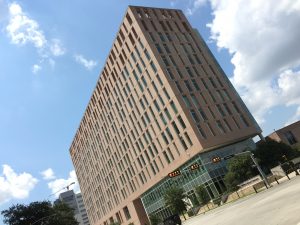
Once I got the data from the Meso-Scale Mechanical Testing Machine and analyzed them, I finished up my research project. I faced some difficulties in an attaching the step, but I finally finished measuring samples and analyzing them. During this week, I more focused on discussing the results with my mentor. When I could not get ideal data, it is essential to consider the reasons and analyze the results. I had meaningful discussion time to make my understanding clearer and touch on the significant parts of the research.
During this research project, I engaged in the mechanical testing and understanding biomechanical measurements, and that was very interesting for me. Testing mechanical behavior, synthesizing chemicals, learning the heart structure, and utilizing big mechanical testing machine and laser device… Everything was very new for me because I belong to a biomedical engineering course at the department of electrical engineering. However, I was excited in this field. I knew I needed to learn not only my field but also other related fields to do research. Unfortunately, it is hard to continue to do this research after I came back to Japan, but I can study this field and acquire the knowledge. Therefore, I would like to keep learning biomechanics.
I would like to say thank you to my host professor, Jane, my mentor, Shail, and the other lab mates. It would be impossible to have such a great experience in the laboratory without their kindness and help.
Question of Week
I would like to know the motivation of people in both academic and industrial field in the U.S. Do they work to live or live to work? What is the highest priority for people in the U.S.?
- This is a very big question and what we call ‘work-life balance’ in the U.S. You will find a variety of different answers and different ways of working in all different fields. Some people in the U.S. are what we call “workaholics” when they put in very, very long hours and are always checking work emails on their phone late at night and on vacation. Sometimes, this is necessary if they have a high-level job or need to respond to emergency situations; but it can also be kind of like an addiction to never ‘turn off’ or stop working.
- In the U.S., most people want to have “work-life balance” and to achieve this they work very hard and in a very focused way during their work time hours but when they are home with their family or friends they are very focused on being present in their personal lives and try to ‘disconnect’ from their work-time commitments.
- However, compared with other countries Americans typically put in very long working hours. Not as much as South Korea, but much longer hours than countries in Europe for example. We also tend not to take or use up all of our vacation time and in the U.S. many people only get 2 weeks of paid vacation per year. We also have fewer federally mandated paid holidays so people in the U.S. tend to not take as much time off as countries in Europe. Also, we don’t have legal protections for paid sick leave or maternity leave in the U.S. so sometimes, you have use your vacation time when you get sick or when one of your kids gets sick. Some people don’t get any paid vacation time at all in the U.S. if they work in a part-time job.
- Work-life balance is something most people strive for in the U.S. but that relatively few actually obtain. It varies though over time and our careers. At some times in our job or career life we will have to put in very, very long hours (live to work) so that we can get a good job or promotion. At other times in our jobs or career life we may be able to take a more balanced approach and work less so that we can have more of a “work to live’ mentality. So, even for the same person, it can vary over someone’s lifetime what our approach to work is.
- For more on this see the section on Work Ethic in the U.S. on our Life in the U.S. Resources page.
Week 06: Final Week at Rice & Research Poster Presentation
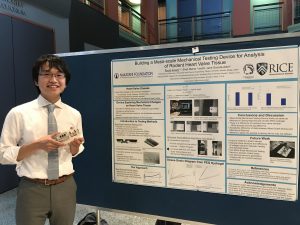 Before I started the poster presentation, I was little sad because it implies this is the end of my great research life in Houston. At the same time, I was excited to present my research project to visitors. As for my first impression, I thought the poster presentation would be hard, and I was concerned whether I could do well or not. However, once the event started, I felt it was not a “presentation” but more like a conversation. I really enjoyed talking with the visitors and answering their questions. As I talked with visitors again and again, I got used to explaining about my research project and improved the quality of explanation. One happy thing during the poster presentation happened. A man who was damaged by the hurricane and that I helped as a volunteer stopped by my poster and talked a lot both about my research and gave me an update on his situation. I was happy that I could meet him again and I heard he was getting back to his usual life.
Before I started the poster presentation, I was little sad because it implies this is the end of my great research life in Houston. At the same time, I was excited to present my research project to visitors. As for my first impression, I thought the poster presentation would be hard, and I was concerned whether I could do well or not. However, once the event started, I felt it was not a “presentation” but more like a conversation. I really enjoyed talking with the visitors and answering their questions. As I talked with visitors again and again, I got used to explaining about my research project and improved the quality of explanation. One happy thing during the poster presentation happened. A man who was damaged by the hurricane and that I helped as a volunteer stopped by my poster and talked a lot both about my research and gave me an update on his situation. I was happy that I could meet him again and I heard he was getting back to his usual life.
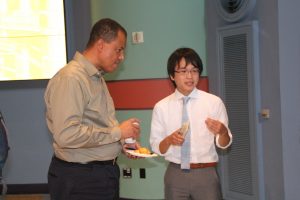
Through this poster presentation, I learned the importance and difficulties of explaining my research to those who are not familiar with my field. I prepared the contents of explanation based on three levels: those who are not familiar with this area, those who know my research topic, and experts such as a professor or Ph.D. students. Because most of the visitors were from different fields, I tried to avoid some technical terms. However, it was harder than I expected to briefly describe my project with easy words. I knew I needed to contrive a way to explain. Additionally, if I could explain my research project well to people, they are not always interested in my project. I think I could talk my about research project to the visitors even though they do not have the knowledge; however, I was not sure they were interested in my research project. Therefore, it is important to attract the audience and let them know about my excitement for this research. I will have another chance to do poster presentation in a couple of years as a senior or a student at a graduate school. To organize the presentation well and attract more visitors, I will practice and study my presentation skills.
Final Research Project Overview
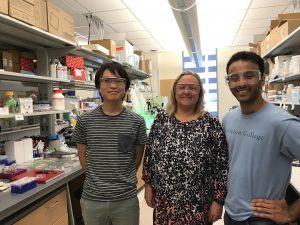
Final Research Project Title: “Building a Meso-scale Mechanical Testing Device for analysis of Rodent Heart Valve Tissue” (PDF)
Host Lab: Grande-Allen Integrative Matrix Mechanics Lab
Host Professor: Prof. K. Jane Grande-Allen
Mentor: Shail Mehta
My research topic is building Meso-Scale Mechanical Testing Device to explore the mechanical changes on heart function. The big picture goal of this project is to get a better understanding of how certain disease affects the mechanics of heart valve. Once we understand, we can find a better solution to fixing the tissue. In this project, I focused on the evaluation of this testing device. During this 4 weeks, I more focused on the evaluation of the prototype.
Recently, heart valve disease has been prevalent worldwide, and the number of patients who need valve replacement surgery has been increasing. It is estimated that the number will be over 850,000 in 2050. From diverse points, researchers have been approaching to the heart valve disease. However, little work has been done for analyzing the mechanical changes on heart function after the replacement surgery. Additionally, a small specimen is used for analyses of heart valve disease. Thus, it is required to build a mechanical testing machine to analyze the mechanical properties of a small sample.
The Meso-Scale Mechanical Testing Device designed based on a publication of a device that could be used to study changes in tissue structure. This prototype is 3D printed and has a calibrated bar and shaped to fit the confocal microscope. To be ease-of-use, this device has a single elastomeric post design, made from polydimethylsiloxane (PDMS). Using this device, I measured how the samples stretch and how the PDMS pillar bent and got result utilizing these data and some mathematical formulas.
To evaluate the Meso-Scale device, I used polyethylene glycol (PEG) hydrogel as testing samples because it is easy to make and can expect the mechanical behavior. I analyzed the PEG hydrogels with different molecular weight and concentration of polyethylene glycol diacrylate (PEGDA): 3.4kDa-20%(w/v), 6.0kDa-20%(w/v), and 20kDa-10%(w/v) using both Meso-Scale Testing device and Mechanical Testing Machine, Electroforce 3200 Series Ⅱ and compared these data. By doing this, I can evaluate the hand-made prototype works well or not.
I got data both from the prototype and mechanical testing machine. According to the diagrams of the stress-strain curve, the properties from both were similar in 20 kDa PEG hydrogels. On the other hand, there is a difference of modules from same samples of 6 kDa PEG hydrogels. In my opinion, this is because of the method to attach samples to the device, the amount of glue of attaching to the hydrogel and paper or small error of measurement. It would generate big gap from small error because the samples are pretty small. Additionally, there is not a definition of acceptable error between the data so it is necessary to decide the definition.
As for the first step of future work, I have to improve the method to attach the sample to get better data and evaluate the device more precisely. Then, I try to address this device to the rodent nature tissue. Using second-harmonic generation imaging with an inverted confocal microscope, I can analyze tissue structure and difference of collagen behavior between healthy and diseased tissue and this would be connecting to the big picture goal of this project.
Week 07: Visit to Washington D.C. and New York City

I felt like I was not in the U.S. but in the U.K. when I arrived in Philadelphia and Lehigh. The scenery in those places was much different from the one in Houston. In Philadelphia, I visited the memorial place of independence. Although my knowledge of world history was just from the high school days, I enjoyed touching with the atmosphere in Philadelphia and learning about its history.
At Lehigh University, the lecture about my strengths and my signature theme was most helpful for me. Since I entered my university in Japan and joined this Nakatani RIES program, people around me have been talented and had some specific skills. Then, I have been stimulated by them and noticed my weak points and sometimes imagine who I want to be and realize some aspects that are necessary for me to improve. Therefore, I did not grasp my strengths at all, but I focused on looking for my weaknesses. This lecture was an excellent opportunity for me to recognize what my strengths are and consider the way of life. Based on the many questions, I found my strength was: deliberative, maximizer, consistency, restorative, and empathy. I thought some of them fit me, but the others do not. However, I was able to realize my strengths through the questionnaire and the lecture. To identify my strength is significant to play a proper role both in academia and industry, moreover, in daily life. As the next semester starts I would like to improve these skills more and overcome my weaknesses.
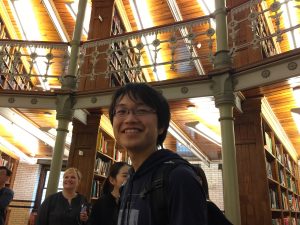
After a long trip from Lehigh, I returned to Japan for the first time in approximately two months. At the airport, I heard the Japanese language a lot and saw signs in Japanese. These atmospheres made me relax, and I felt even more like I came back to Japan.
As for the closing ceremony, I visited Sysmex’s office. Before I visited there, I had heard about the scale and luxuriousness of the company from U.S. Fellows. Also, I knew the Sysmex is one of the biggest companies in the healthcare business. However, after I entered the property, the awesomeness was much more drastic than I expected. During the company tour, I heard about the working experience form a researcher at Sysmex. He talked about the reasons why he decided to apply for a Ph.D. program and chose the industry. They were fresh, meaningful and helpful for me to consider my future career because, during my stay in the U.S., I heard some stories from people in academia. At the end of this ceremony, we did a presentation of our research at Rice University. Actually, it was almost the first time to hear the projects of all members. Everyone did a great presentation and the explanations were easy to understand even though I do not have prior knowledge of their fields. During this program, other Japanese Fellows showed me a model as a senior. Thanks to this six weeks, I got really inspired and motivated toward researching and studying from them. I would like to keep studying hard from next semester at my university.
Question of Week
It seems universities in the U.S. keep their original design both inside and outside. On the other hand, in Japan, most of the universities do not keep their original design but have a modern design. At my university, the campus is new and well designed with modern technology although my university is older than Rice University. How and why do they keep their own design for a long time?
- This is not true of all universities in the U.S. Many universities are more similar to Japan, where the buildings are all different looks and designs with most buildings having been constructed in the 1960s and 1970s (when the baby boomer generation was in college). This is particularly true at public universities in the U.S.
- However, among private universities there is often more attention paid to requiring that all buildings maintain the same ‘look’ or design and the aesthetics of the campus. So, you will see differences among university campuses in the U.S. – some are very pretty with all the buildings alike while others have more variety in their design. It really depends school by school and remember that there are more than 5,300 colleges and universities in the U.S. So, beware of sample size bias and remember not to assume that all schools in the U.S. are like the two campuses you visited during this program. 🙂
- However, in comparison to Japan, how a university looks or ‘feels’ to perspective students when they visit a campus is very important since all universities in the U.S. compete with each other to get excellent students to come there for undergraduate or graduate study. So, overall, more attention is paid to campus design, landscaping, and student amenities since admission is not just by entrance exam alone – students often get accepted into multiple different schools and then visit them to decide which school they want to attend.
Final Report & Tips for Future Participants
The Nakatani RIES program entirely changed my mind and gave me a new perspective on my future career. Before I participated in this program, I was planning to get a job after my master’s degree in Japan as many people follow such a path. However, I have thought it is boring and is not challengeable in my life. Applying for graduate school in the U.S. or being a researcher abroad never crossed my mind. Therefore, I was lucky to get such a great opportunity to consider my future career and gain research experience during my bachelor’s degree. As a result of participation in the Nakatani RIES Fellowship program, I found two important things for me.
First of all, I found what I should do from now on. During this program, I conducted research at the Grande-Allen Lab but the experience was not actual research but more like helping some tasks of my mentor. Also, thanks to the great program organized by many people of Nakatani Foundation and at Rice University, my research internship became impressive, but in other words, I could not do anything by myself. For me, a second-year student, it was great opportunity to know more about what the research life in the U.S. is like. Through this six-week program, I realized I needed to improve my skills such as lab skills, computer skills, and management skills in addition to my academic skills. I realized lots of things that I cannot find out in my usual life in Japan. Besides, it was a good time to consider what my curiosity is. For as long as I can remember, I have been interested in applying engineering technology to medicine but I have been not sure which engineering field is my curiosity. The reason why I choose Jane’s lab, researching biomechanics and tissue engineering, is to study little different field from my study at Tohoku University. Moreover, working with my mentor whose background is applied physics was a good time to think about my specific research topic in the future. This time, I learned about biomechanics and studied different fields. At my university, I will keep looking for my future research topic or specific study field.
Secondly, in this program, I met and talked with many people; lab mates, students and other people at Rice University, the staff of Nakatani Foundation, U.S. Fellows, and Japanese Fellows. These days, thanks to the technology and the development of the internet, I can communicate with people around the world and get many kinds of information. Additionally, I can take classes at foreign universities even though I am in Japan. In such a magical world, what is the meaning of joining in like this program? Gaining a hands-on research experience is one of the important things in this program. Actually, the reason why I participated in this program is to get a chance to research during my second year. However, I realized making relationships with people from diverse backgrounds is as significant as having research experience in this program. I have been stimulated by those who I met in this program. Through this great summer, I got really inspired and motivated toward studying and pursuing to challenge my goals. I would like to keep in touch with them and encourage each other. I convinced that the relationship that I got in this program is my treasure.
For university students, it is important to get information by themselves and ask seniors or those who are familiar with it. As for the first step, once you want to get information, it would be a good way to contact with and ask past participants. Additionally, this program is great chance to consider your future career and know the Ph.D. program in the U.S. I think even if you are interested in graduate school in the U.S., not so many chances are there. How can you get the chance? It is the Nakatani RIES program! Moreover, talking both with Japanese and foreign Ph.D. students in the U.S directly is a shortcut to obtain real opinions and experiences. As I made great relationships, you will make lifelong mates in this program.
Follow-on Project
After I returned to my university, I did a presentation about this Nakatani program with Shohei Nishimura at a summer program session organized by international exchange office of Engineering department. I explained what the Nakatani RIES for Japanese Fellows is, my research project at Rice, some seminars that I took in this program, and other cultural reflections. There are many study abroad programs at my university, but research internship programs for undergraduate students are not so many. Therefore, I hope it was good opportunity for other participants in the session to know about this program.
Also, I would like to let my high school students know this program. Because my high school is in the countryside, the students cannot get much information or seminars about studying abroad or applying for the university in other countries. Therefore, I strongly give them information about this program. I will contact with my teacher in my high school and I hope I get a chance to talk with them.
Final question about U.S or research in the U.S.
How do Ph.D. students in the U.S. survive in the competitive environment?
- You might want to review the articles on graduate student work-life balance to the Work Ethic in the U.S. section and you might also want to review some of the resources and articles on the Applying to Graduate School in the U.S. page of our website.
